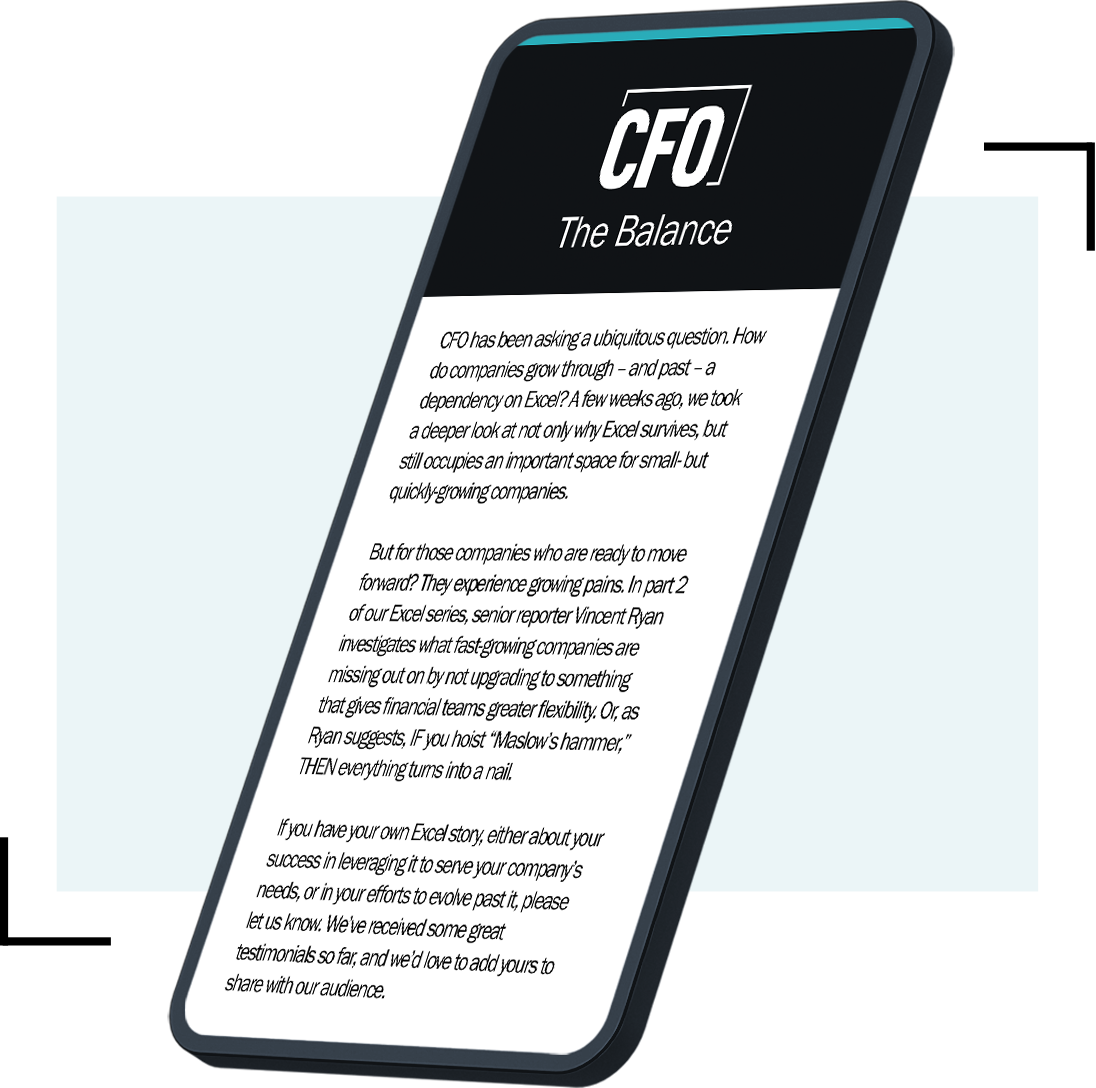The Latest
-
ADM’s CFO to resign amid DOJ investigation
The 20-year veteran of the company will stay on in a “non-executive” capacity until later this year.
-
Return to office trends, PCE data, and Lacework’s CFO: Trial Balance
This week, we look forward to critical readings on economic growth and inflation.
-
CFOs navigate the weeds of cannabis accounting to drive industry growth
“When controlling growth, we advise to test the market first before they go out and spend a ton of capital.”
-
CFOs On the Move: Week ending April 19
New finance chiefs at Exact Sciences, Siemens Government Technologies, and Bloom Energy.
-
Q&A
OnlyFans CFO Lee Taylor: Building scalable finance to lead creator economy
“One of the unique things about OnlyFans is its self-funding. We have always been profitable and cash-generative.”
-
David Ostrove, former Long Island school CFO, sentenced up to 25 years
Ostrove was referred to as “a charlatan and a brazen thief” by State Supreme Court Justice John Collins.
-
Alphabet CFO Ruth Porat’s internal memo reveals Google finance team restructuring, layoffs
“The tech sector is in the midst of a tremendous platform shift with Al,” Porat wrote in the internal memo, indicating the company would reallocate its assets to other tech initiatives.
-
Private debt funds rise 13.3% YoY in 2023, surpasses VC fundraising
“2023 was a great test for private debt, and it passed with flying colors.”
-
34% of CFOs ‘very optimistic’ about US economy: Report
Despite overall optimism, finance chiefs consider cost optimization a top focus area.
-
Customers Bancorp fires CFO for ‘cause,’ promotes insider to top spot
Following Carla Leibold’s immediate termination, the bank promoted Philip Watkins to the parent company’s top chief finance spot.
-
73% of accounting firms not using AI: Report
Despite its trendiness, 35% of accountants said their organizations are not using AI and have no plans to do so.
-
Opinion
The CFO-CMO partnership is the new dynamic duo
These measures help bridge the gap between marketing and finance.
-
Q1 corporate bankruptcies up 43% over last year
U.S. bankruptcy filings through March 31 increased year over year across all major filing categories.
-
NYCB hires new CFO, general counsel
The beleaguered Long Island-based lender brought aboard four executives Friday whose careers had crossed paths with that of newly minted CEO Joseph Otting.
-
NYSE President Lynn Martin talks IPOs; CFOs tackle cannabis accounting: Trial Balance
IPOs have raised 3.5 times the amount raised a year before.
-
68% of Gen Z workers would take an unwanted job for good pay: Report
Only 10% of Gen Z workers said they want more money so they can “splurge on things,” according to new data.
-
Chicago transit oversight board CFO: Strategy creation to execution
“We've been driving innovation in core areas like budgeting, financial reporting, and IT. This collaborative spirit positions us for continued success,” Kevin Bueso said.
-
CFOs on the move: Week ending April 12
New CFOs at KFC Global, Brightcove, Illumina, and more.
-
Q&A
Siemens Mobility NA’s CFO Bernd Blumenstein Drives Change for 176 Year-Old Company
As a regional CFO of a 176-year-old company, Blumenstein explains his part in the organization’s shift from a manufacturer to a technology provider.
-
The 6 a.m. CFO: How the Savannah Bananas’ Dr. Tim Naddy Starts His Day
Naddy shares how he structures his mornings, his favorite quote, and what his walk out song would be.
-
73% of CFOs to Earn Salary Between $201k-400k in 2024: Report
A new survey from Rho on CFO compensation figures reveals compensation, equity, and severance trends for finance chiefs.
-
PCAOB Hits KPMG Netherlands, Deloitte Affiliates With Exam Cheating Penalties
The civil penalties levied by the PCAOB reflect “egregious” widespread cheating on internal examinations required to maintain a CPA license.
-
Small Business Optimism Hits 11-Year Low: NFIB Report
Small business optimism dips as inflation concerns remain.
-
Opinion
The Post-IPO Checklist: 7 Insights for CFOs
The more CFOs know about life after going public, the better.
-

 "Royal Bank of Canada's global headquarters at 200 Bay Street in Toronto, Canada" by Francisco Diez is licensed under CC BY 2.0
"Royal Bank of Canada's global headquarters at 200 Bay Street in Toronto, Canada" by Francisco Diez is licensed under CC BY 2.0
Royal Bank of Canada Fires CFO Over Undisclosed Personal Relationship
The internal investigation that ousted Nadine Ahn may result in forfeiture of significant compensation due to misconduct.


























